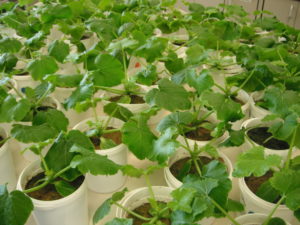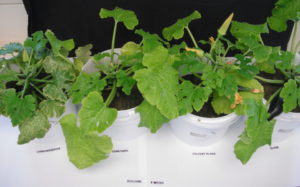Ever wondered what effect pharmaceutical drugs have on the environment once they’ve passed through your body and into the sewage system?
It’s an important question for Australia as the wastewater irrigation sector grows, with about 66% (280 gigalitres) of recycled wastewater being used by farmers, mainly to irrigate pasture for dairy cows and other livestock.
Environmental chemist and toxicologist Dr Mike Williams has found that active ingredients in some commonly used drugs are resistant to wastewater treatment and can adversely affect the growth and health of irrigated plants.
Pharmaceutical waste is an emerging but significant environmental contaminant not widely understood, said Dr Williams, who presented his findings to the Fifth International Conference on Emerging Contaminants and Micropollutants in the Environment in Sydney last month.
Epilepsy and blood pressure drugs tested
Dr Williams investigated two drugs:
- Carbamazepine is used to treat epilepsy.
- Verapamil is used to treat high blood pressure.
Carbamazepine and Verapamil regulate the flow of sodium and calcium, respectively, across cellular membranes in humans were expected to have a similarly important effect in plants.
“Carbamazepine is a very commonly used drug. It’s used at high levels and it’s very resistant to treatment. Whatever goes into a water treatment plant generally comes out,’’ Dr Williams said.
“We know that in humans Carbamazepine modifies the sodium channels and function. In the case of Verapamil, which is used for heart disease, it modifies the function of the calcium channel. We know that calcium channels are a very important biological function in plants. That’s why we decided to look at Verapamil as well.’’
Even low concentrations affect plant growth and disease resistance
What Dr Williams found was that active ingredients in the Carbamazepine and Verapamil affected concentrations of the plants' growth hormones and defence hormones which signal to the plant to grow or mount a defence response.

In a number of plant species, including silver beet and zucchini, uptake of active ingredients occurred after just four weeks of growth.
Starting with concentrations of 5 micrograms per kilogram, representing those levels of active ingredients in wastewater, the study moved to 2000 times that amount to observe the effect on the plants’ signalling and defence hormones.
“We were surprised that we were seeing effects at such low concentrations. As soon as we exposed the plants, an impact on the amount of plant signalling was happening. For the two hormones which can control plant defence mechanisms—the jasmonates and abscisic acid— signalling decreased. You could see that happening until you got to the highest concentration,’’ Dr Williams said.
“This could have implications for the ability of a plant to defend itself against diseases.”
It wasn’t just the plants’ defence hormones that were affected.

“Growth hormones auxins and cytokines increased in all of the treatments until we got to the higher concentrations The decline in hormone levels at the higher concentrations may have been due to toxicity causing a breakdown in the plant's ability to regulate hormones, he added. The plants showed visible yellowing and blackening of leaves even at environmental concentrations, and up to 50% drop in photosynthetic pigments at the highest concentrations of 10 mg/kg of Carbamazepine, displaying symptoms akin to sugar deficiency. This decline in plant health and its defence mechanisms as a result of uptake of these ingredients could have implications for farmers, depending on the plant variety. Dr Williams recommends that the hormonal response should be checked in a wider variety of crop species, so that wastewater can be targeted for irrigation of those species less affected. An earlier study of zucchini by Dr Williams and his CSIRO team shows that the risk of contaminants being transferred to the fruit, and therefore to humans, is low. “You’d have to eat a couple of tonnes of zucchini to get a single dose of the drug,’’ he said. Dr Williams’ research is now expanding to look at transfer of active ingredients to the plants’ pollen and nectar and what this may mean for the environment, particularly for pollinators such as bees which are a vital part of broadacre agriculture. “Colony collapse is a big issue at the moment, in particular what’s happening in North America and Europe. In Europe they’ve banned the use of neonicotinoid pesticides, for example, which are a contributing cause. But we continue to use the pesticide in Australia, very commonly,’’ Dr Williams said. “You also have other plant stressors, such as climate, which are putting pressure on the bees. If, on top of that, bees are exposed to these active chemicals via pollen and nectar, then these chemicals could also be a concern. Pollinators are critical for a number of food crops around the world and Australia.’’ Dr Williams expects that any enhanced water treatment to remove active pharmaceuticals will undergo a cost/benefit analysis in line with the risk they pose. SA Water wastewater operations senior manager Lisa Hannant said pharmaceuticals are not currently screened in wastewater treatments for irrigation in South Australia, a state at the forefront of recycling with 27–31% of sewage currently being recycled.
Farmers and market gardeners north of Adelaide have used recycled water in earnest since 1999 and are expected to double their annual use from 20 gigalitres to 40 gigalitres with the recent expansion of SA Water’s Northern Adelaide Irrigation Scheme. By the time farmers use the recycled water, it has been treated twice, said Hannant, the second treatment using filtration and disinfection which disinfects pathogens and viruses in line with stringent Health Department requirements. This second treatment, which is about making sure plants have the right mix of dissolved salts and nutrients, is heavily subsidised, she said, because the benefits to the environment far outweigh the costs to recycle water for agricultural purposes for the government-owned utility. Dr Williams said that more research is required to address the lack of data on pharmaceutical contaminants in the terrestrial environment and their effects on terrestrial species, including crops. “There’s a range of different areas that need to be explored," he said. "Ours is a very preliminary study and it demonstrates that there is an effect. But what the ramifications are and how much money you’re prepared to spend on trying to avoid or trying to manage the issue is probably the next big question.’’Implications for irrigation farmers
Pollen, nectar and bees
Removing the chemicals from wastewater used for irrigation
How much are we willing to spend?
